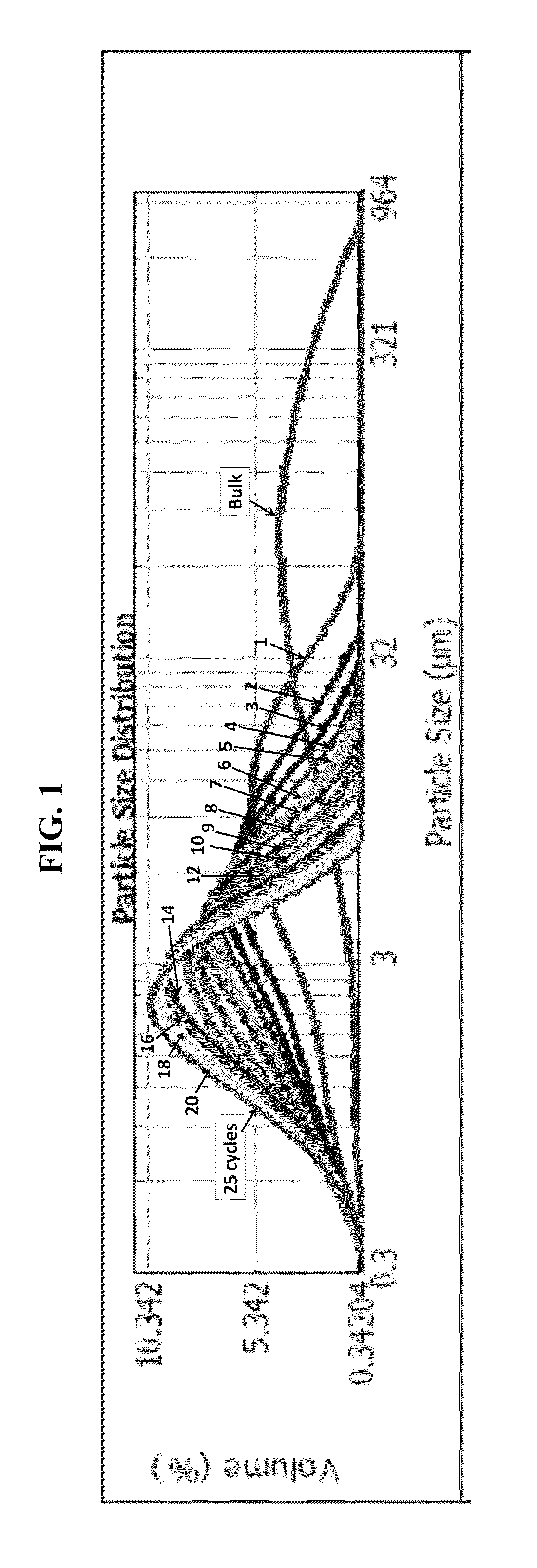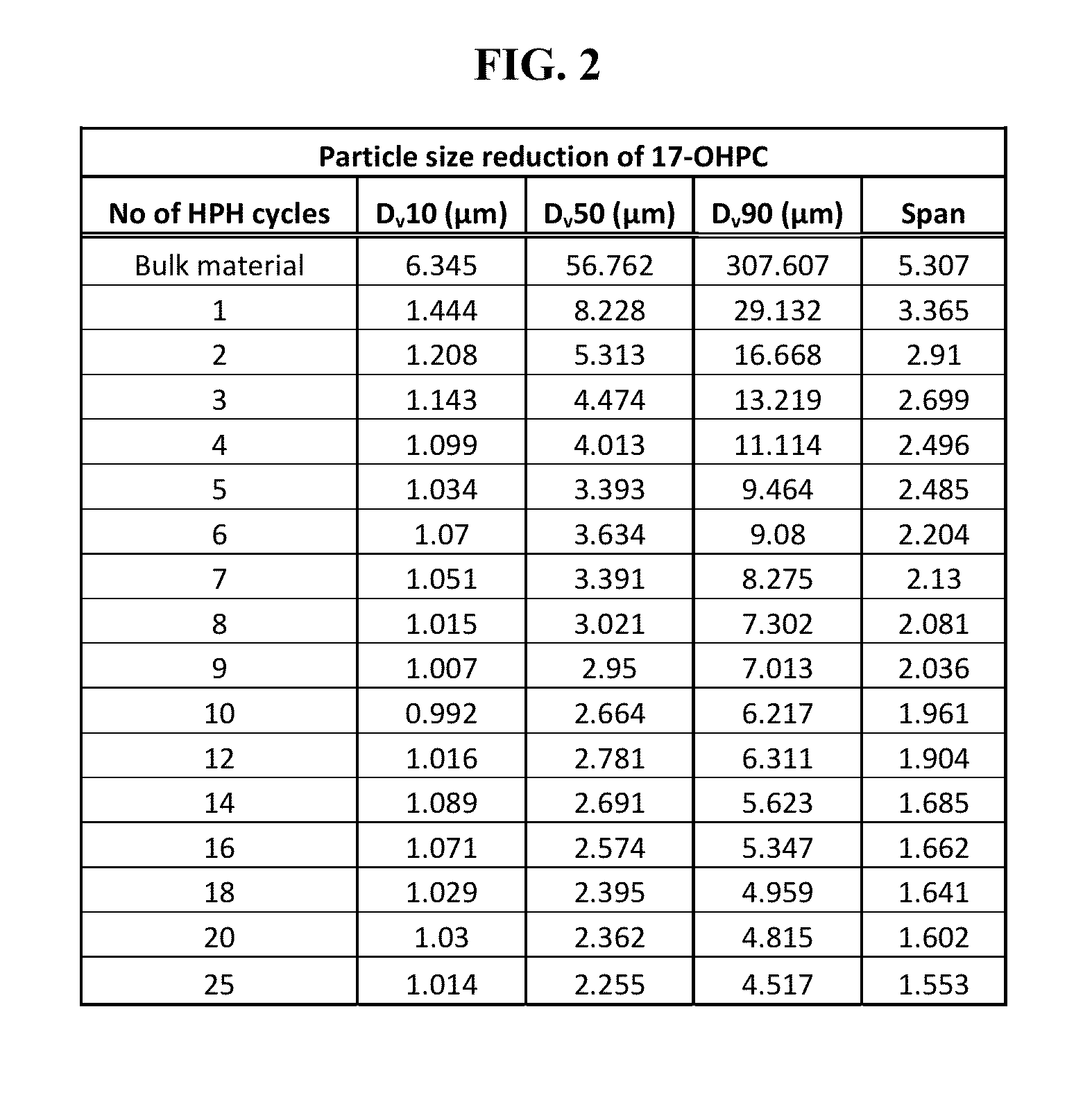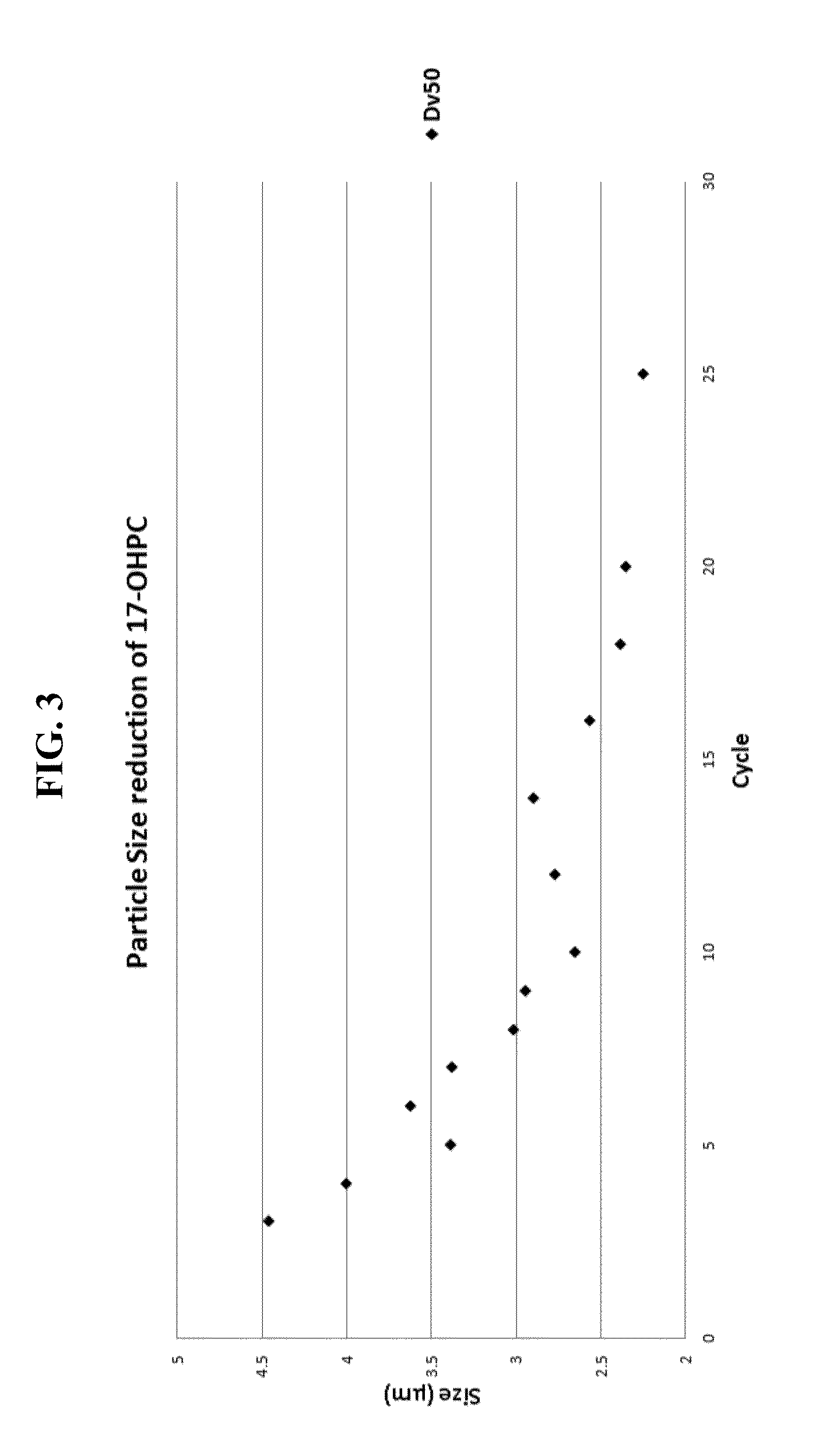Pulmonary Delivery of Progestogen
a progestogen and pulmonary tube technology, applied in the field of inhalation formulations, can solve the problems of equipment erosion and impurities, difficulty in controlling particle size and shape, loss of activity, etc., and achieve the effect of restoring corticosteroid sensitivity and enhancing glucocorticoid sensitivity
- Summary
- Abstract
- Description
- Claims
- Application Information
AI Technical Summary
Benefits of technology
Problems solved by technology
Method used
Image
Examples
Embodiment Construction
[0075]A particularly preferred route of delivery for administering effective amounts of the progesterone compounds or compositions containing therapeutically effective concentrations of the compounds is via an inhalation route of administration. When an inhalation route of administration is used, delivery may preferably be, for example, via an aerosol spray or powder mixture in a pressurized pack or a nebulizer or in an inhaler.
[0076]Inhalation formulations may be used for the treatment of glucocorticoid-insensitivity related diseases or disorders, or conditions as previously provided in the U.S. patent application Ser. No. 13 / 174,939. Inhalation formulations may also be used for treating IL-17 cytokine-mediated auto-immune and auto-inflammatory diseases. For example, IL-17 has been linked to numerous inflammatory and auto-inflammatory diseases such as autoimmune and type-1 diabetes (Emamaullee J. A. et al., Diabetes 2009, 58:1302-1311, and Kudo et al., Nat. Med. 2012, 4; 18(4):547-...
PUM
| Property | Measurement | Unit |
|---|---|---|
| particle size | aaaaa | aaaaa |
| Dv50 particle size | aaaaa | aaaaa |
| Dv50 particle size | aaaaa | aaaaa |
Abstract
Description
Claims
Application Information
 Login to View More
Login to View More - R&D
- Intellectual Property
- Life Sciences
- Materials
- Tech Scout
- Unparalleled Data Quality
- Higher Quality Content
- 60% Fewer Hallucinations
Browse by: Latest US Patents, China's latest patents, Technical Efficacy Thesaurus, Application Domain, Technology Topic, Popular Technical Reports.
© 2025 PatSnap. All rights reserved.Legal|Privacy policy|Modern Slavery Act Transparency Statement|Sitemap|About US| Contact US: help@patsnap.com



